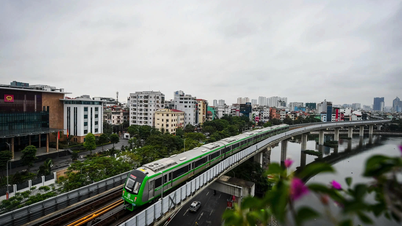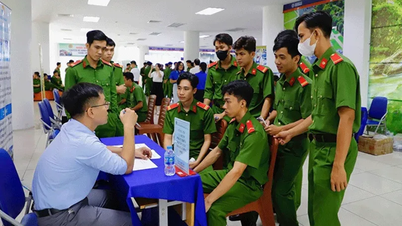“Voters reflect that workers’ lives are facing many difficulties, so the need for loans tends to increase. It is known that there are many loan support packages from credit institutions and there is coordination with trade unions to bring credit packages to workers. However, the interest rates of these loan packages are still high, not meeting the expectations of workers. Voters suggest that the banking sector pay attention to reducing loan interest rates in the coming time for workers when they need to borrow capital,” the voters suggested.
Regarding this content, the State Bank of Vietnam (SBV) said that recently, implementing the policies of the National Assembly and the direction of the Government and the Prime Minister, the SBV has continuously adjusted down the operating interest rates 4 times with a reduction of 0.5-2.0%/year, in the context of world interest rates continuing to increase and anchor at high levels.
At the same time, direct credit institutions to reduce costs to reduce lending interest rates to support businesses and people to recover and develop production and business; request credit institutions to continue implementing measures to reduce interest rates, especially reducing lending interest rates for loans with outstanding balances and new loans (striving for a minimum interest rate reduction of 1.5-2%/year), thereby actively supporting businesses and people to recover production and business, promoting economic growth.
In addition, in order to meet some capital needs as prescribed in Circular 39/2016/TT-NHNN dated December 30, 2016, the State Bank of Vietnam has stipulated the maximum short-term lending interest rate in Vietnamese Dong for customers assessed by credit institutions to have a transparent and healthy financial situation at 4.0%/year.
Up to now, lending interest rates have tended to decrease (the average lending interest rate of new transactions in VND of commercial banks has decreased by about 1.0%/year compared to the end of 2022). With the impact of policy lag after the adjustments to the operating interest rate by the State Bank, it is expected that the lending interest rate level will continue to decrease in the coming time.
Regarding loan support packages for workers, the State Bank said that at the Prime Minister's Dialogue Conference with Workers on June 12, 2022 in Bac Giang , two financial companies pledged to allocate VND 20,000 billion from the capital of credit institutions to lend to workers at preferential interest rates equal to 50% of the interest rates these companies are lending on the market to limit and gradually push back the situation of "black credit".
In October 2022, the Vietnam General Confederation of Labor and two financial companies signed a cooperation agreement and disbursed. By the end of June 2023, these two financial companies had disbursed about VND 6,901 billion.
In addition, the State Bank has implemented many solutions to support people and businesses, including workers, such as issuing Circular 02/2023/TT-NHNN dated April 23, 2023 regulating the restructuring of debt repayment terms and maintaining debt groups by credit institutions and foreign bank branches to support customers in difficulty and Directive 02/CT-NHNN dated May 23, 2023 on strengthening credit activities and implementing Circular 02/2023/TT-NHNN.
Complete the legal framework guiding consumer credit lending. Manage credit to meet the capital needs for production and business in a timely manner, serving the living and legitimate consumption needs of workers. Direct credit institutions to expand and diversify banking products and services, promote credit for production, business and consumption with reasonable interest rates, and simplify lending procedures.
Currently, credit institutions with large consumer loan balances are implementing about 30 products serving consumption purposes such as housing, medical examination and treatment, education, purchasing equipment, means of transport, etc.
In addition, the Bank for Social Policies is also implementing many credit programs to support housing for the poor and policy beneficiaries who meet the loan conditions.
TM
Source







![[Photo] Pink ball and table tennis](https://vphoto.vietnam.vn/thumb/1200x675/vietnam/resource/IMAGE/2025/5/26/d9f770bdfda243eca9806ea3d42ab69b)



















![[Photo] Ea Yieng commune settlement project abandoned](https://vphoto.vietnam.vn/thumb/1200x675/vietnam/resource/IMAGE/2025/5/25/57a8177361c24ee9885b5de1b9990b0e)
![[Photo] French President Emmanuel Macron and his wife begin state visit to Vietnam](https://vphoto.vietnam.vn/thumb/1200x675/vietnam/resource/IMAGE/2025/5/25/03b59c7613144a35ba0f241ded642a59)































![[Infographic] Vietnam-France Comprehensive Strategic Partnership](https://vphoto.vietnam.vn/thumb/402x226/vietnam/resource/IMAGE/2025/5/26/986f63068ea9413dbbb558ee6c6944f3)



































Comment (0)